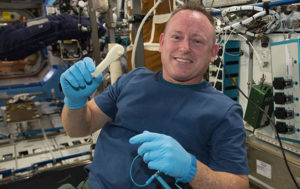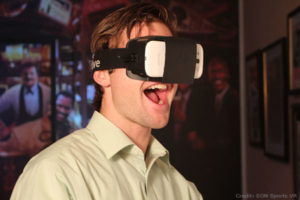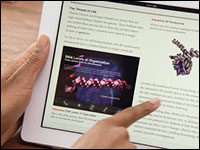
The fight against cancer is often lost before it is even waged. Too many patients get the news too late. However, the battle may soon take a turn, as advances on the nano frontier bring more sophisticated firepower to the front lines.
Latest developments include nanosensors that can detect minute amounts of cancer biomarkers in human blood. Forewarned is forearmed, and such early warnings allows doctors to use their entire medical armament, buying precious time to save a human life.

Nano No No
Until a team of scientists led by Yale researchers found a way to make nanosensors work in human blood, which teems with obstacles like proteins and ions, using nanosensors in such a way was completely impossible.
“We had been working on nanowire biosensors for some time, but like everyone else in the field, were limited by the fact the sensors would not work in high ionic strength solutions such as blood,” said lead scientist Mark Reed, Harold Hodgkinson professor of engineering & applied science at Yale.
“We realized that we had to find a way to solve this, or the technology would not go anywhere,” he told TechNewsWorld.
Eureka! Capture and Release
Acutely aware of the ticking clock for many cancer patients, the researchers wrestled with the problem.
“We had a ‘Eureka’ moment during a brainstorming session with Tarek Fahmy, the lead author, Eric Stern and myself, where we tried and discarded many different ideas,” explained Reed. “During this, Eric came up with the ‘capture/release’ idea, and everything was easy after that.”
The idea may be simple, but it’s also brilliant. The “capture/release” component is a filtering device that catches the biomarkers on a chip. The rest of the blood is washed away. For the purpose of research and development of the device, antigens specific to prostate and breast cancer were used.
The buildup of antigens on the chip allows the nanowire to detect extremely small concentrations in the neighborhood of picograms per milliliter. The reading has an accuracy of plus or minus 10 percent.
This is the equivalent of being able to detect the concentration of a single grain of salt dissolved in a large swimming pool, according to the research team.
Meaning in a Minute
The result: a small, portable device that doctors can use in their offices or in remote areas of the world. Within mere minutes, the device can deliver results.
Compare that to the current complex method — with the labeling and transportation error risks this process can entail. It involves drawing blood from the patient and sending it to a lab, using a centrifuge to separate the different components, isolating the plasma, putting it through an hours-long chemical analysis, and then waiting to see the patient again to deliver the news.
The whole process takes several days and even then can be wrong if the biomarker concentration is too small for standard tests to detect, or if the doctor’s subjective interpretation is too far off base.
Equal Opportunity Cancer Tracker
Fortunately, the new device can be used to test for a wide range of biomarkers simultaneously, from ovarian cancer to cardiovascular disease, Reed said.
“We see many potential benefits beyond our initial demo of cancer biomarkers,” he noted.
“The approach is very general and can work on just about any biomarker,” Reed continued. “We’ve even formed a company, Altura Diagnostics, to commercialize it.”





















































